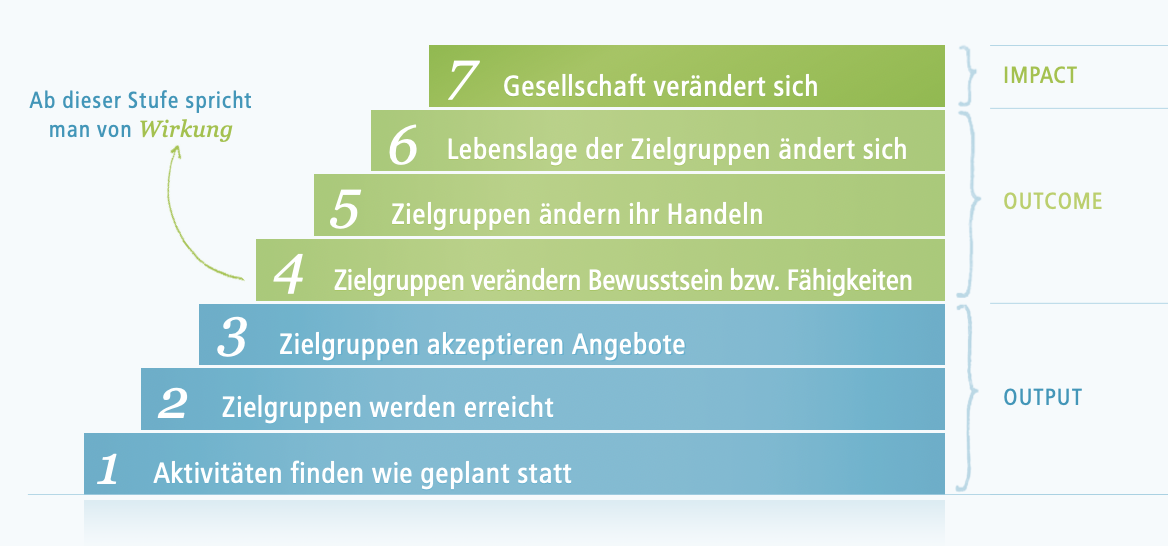Methods
The participant impact surveys were designed by the Duke of Edinburgh’s International Award Foundation in collaboration with the University College of London and are based on scientifically validated scales.
Nationally, our Executive Board is certified as an impact manager by Phineo gAG.
We measure and analyse data at national and international level.
We measure our input through the Online Record Book. We collect data for this:
- Number of participating organisations and proportion of educational institutions in challenging situations
- Number of volunteer award leaders and new training programmes
- Number and demographics of active and new participants, as well as awards achieved (e.g. by age, gender, federal state, type of school)
- Ratio of educational institutions and their participants (public vs. private)
- Number of hours worked in the areas of commitment, fitness and talent, as well as the specific areas
- Number of days on expedition, depending on level
We measure our output. We have adapted the international impact survey to German legal requirements and anonymised it. The data is collected using Surveymonkey and also includes general questions on satisfaction with the programme.
We focus on the impact goals of self-confidence and resilience and use scientifically validated scales according to Rosenberg, Romppel, Wagnild & Young. We also enquire about the background of the participants.
Surveys with Award participants, adults who support the Award and Award alumni.
Monitoring of programme providers: Annual statistics (e.g. Awards achieved), number of adults trained as Award Leaders and ORB data (see above).
Utilisation of secondary sources: WorldBank (e.g. GDP, life expectancy) and government reports.
Together with PwC, we have developed a logical model to determine and evaluate the impact of the award programme.
The resulting impact chains are based on the Phineo impact staircase (Phineo 2021).
Impact chains represent the relationship between:
- Input: What was invested to implement and execute the programme?
- Output: Activities carried out as a result of the investment
- Outcome: What has changed as a result of the programme in terms of perceptions, attitudes and skills, new ways of acting and the living conditions of the target groups?
- Impact: What effects of the programme benefit society in the long term?
You will find our resulting impact logic under the results.
With the help of PwC and its Total Impact Measurement and Management ( TIMM ) framework, the social value of the award was measured worldwide.
The TIMM framework uses robust methods to quantify and monetise the economic, social, environmental and fiscal impact of activities. This framework can be applied at the level of a product, a project, a site or even an entire organisation. The methods are based on widely recognised approaches such as the UK Government’s Green Book on Policy Appraisal and Evaluation, the Social Return on Investment (SROI) principles and the WBCSD’s Social & Human Capital Protocol.
There are different definitions of social impact, but in general it refers to the positive and negative impact and dependency of an activity on people and society (WBSCD, 2015). Social value in the context of the programme refers to the value, in monetary terms, of the changes the programme has created for and through its stakeholders (e.g. the young people participating in the programme, the adults involved in delivering the programme and other members of society such as businesses and governments).




